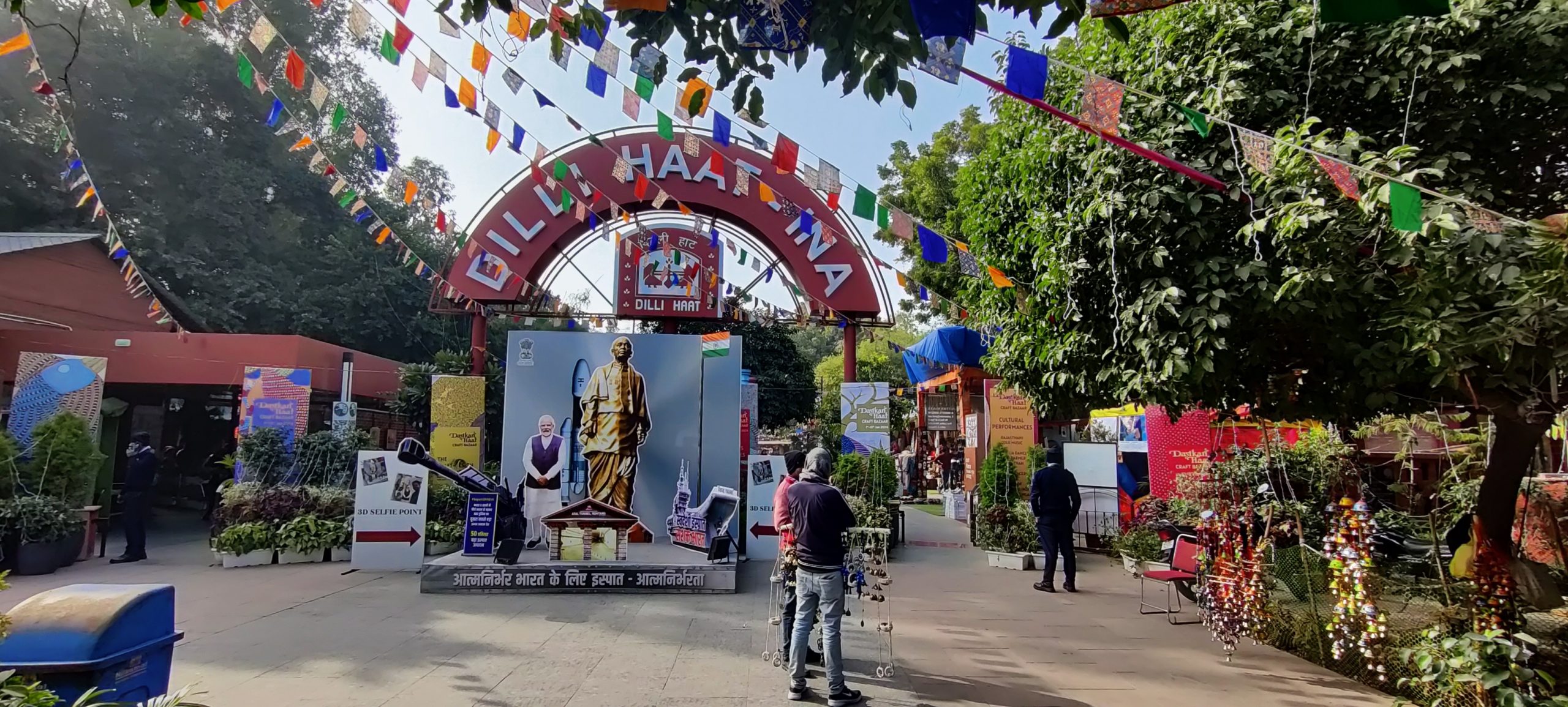The Dastkari Haat Samiti’s 38th Annual Crafts Bazaar has taken centre-stage at Dilli Haat.
Artisans from across the country are participating with 190 stalls showcasing traditional art and craft at the event, which is dedicated to the preservation of India’s crafts heritage and sustaining the livelihoods of people associated with it.
Aside from crafts, there were lively cultural performances including Rajasthani folk music, the energetic Kalbelia dance from Barmer in Rajasthan, and the rhythmic Chaau dancers from West Bengal. These performances added extra spark to the lively atmosphere.
Embodying the ethos of cultural preservation, the bazaar stands as a dedicated effort to sustain the livelihoods of those embedded in India’s diverse crafts heritage.
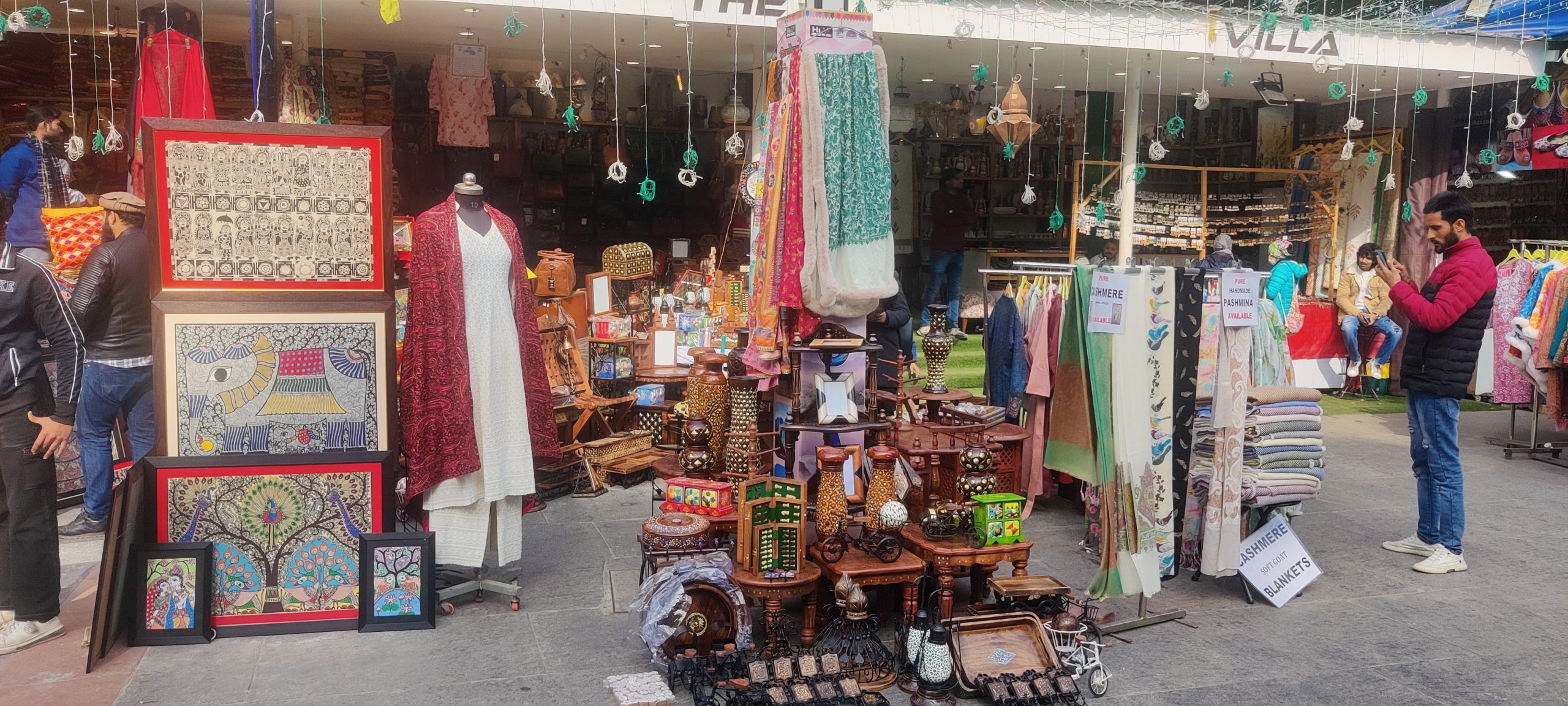 With an array of weaves, handblock prints, embroideries, and crafts in grass, bamboo, metal, wood, and other plant materials, the event offers a captivating display of India’s artistic creativity.
With an array of weaves, handblock prints, embroideries, and crafts in grass, bamboo, metal, wood, and other plant materials, the event offers a captivating display of India’s artistic creativity.
At the heart of the bazaar’s offerings lies an assortment of captivating and diverse crafts, including the mesmerising ‘leheriya’ (traditional style of dyeing in Rajasthan), intricately designed jewellery, artisanal stationery, and the timeless allure of ceramic and terracotta. This amalgamation of skill, tradition, and creativity has left visitors enchanted, offering a window into India’s rich and vibrant cultural legacy.
For Owais Ahmad, 30, the event is a perfect platform to exhibit the remarkable talents of artisans hailing from the picturesque valley of Kashmir. His stall offers a wide array of shawls, each painstakingly crafted with meticulous handwork, serving as a testament to the region’s rich artisanal heritage and cultural finesse.
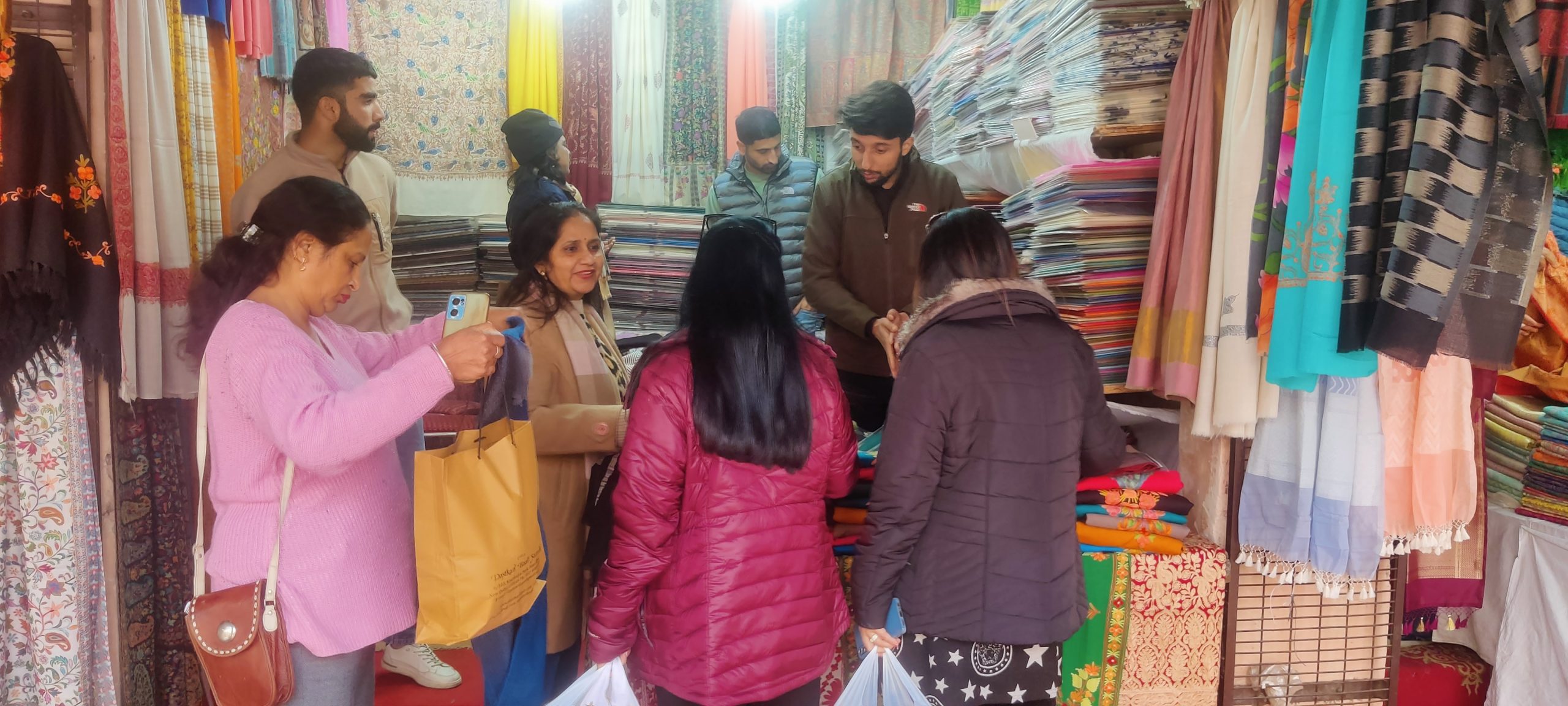 “Over the last six years, our active involvement in this event has consistently brought forth an outpouring of appreciation from the visitors. This annual platform not only aids us in maintaining our livelihood but also plays a pivotal role in propagating and upholding our indigenous culture on a national scale,” said Ahmad.
“Over the last six years, our active involvement in this event has consistently brought forth an outpouring of appreciation from the visitors. This annual platform not only aids us in maintaining our livelihood but also plays a pivotal role in propagating and upholding our indigenous culture on a national scale,” said Ahmad.
The event showcases a diverse array of crafts from every state, offering a rich tapestry of artistry from across the nation. Each state presents a unique craft, ranging from leaf printing on textiles from Gujarat, ‘leheriya’ from Rajasthan to jute products from Maharashtra, and cane and bamboo from Assam, among others.
This beautiful assortment includes handcrafted mura from West Bengal, bamboo leaf from Madhya Pradesh, and mud-work and mirror artistry from Gujarat.
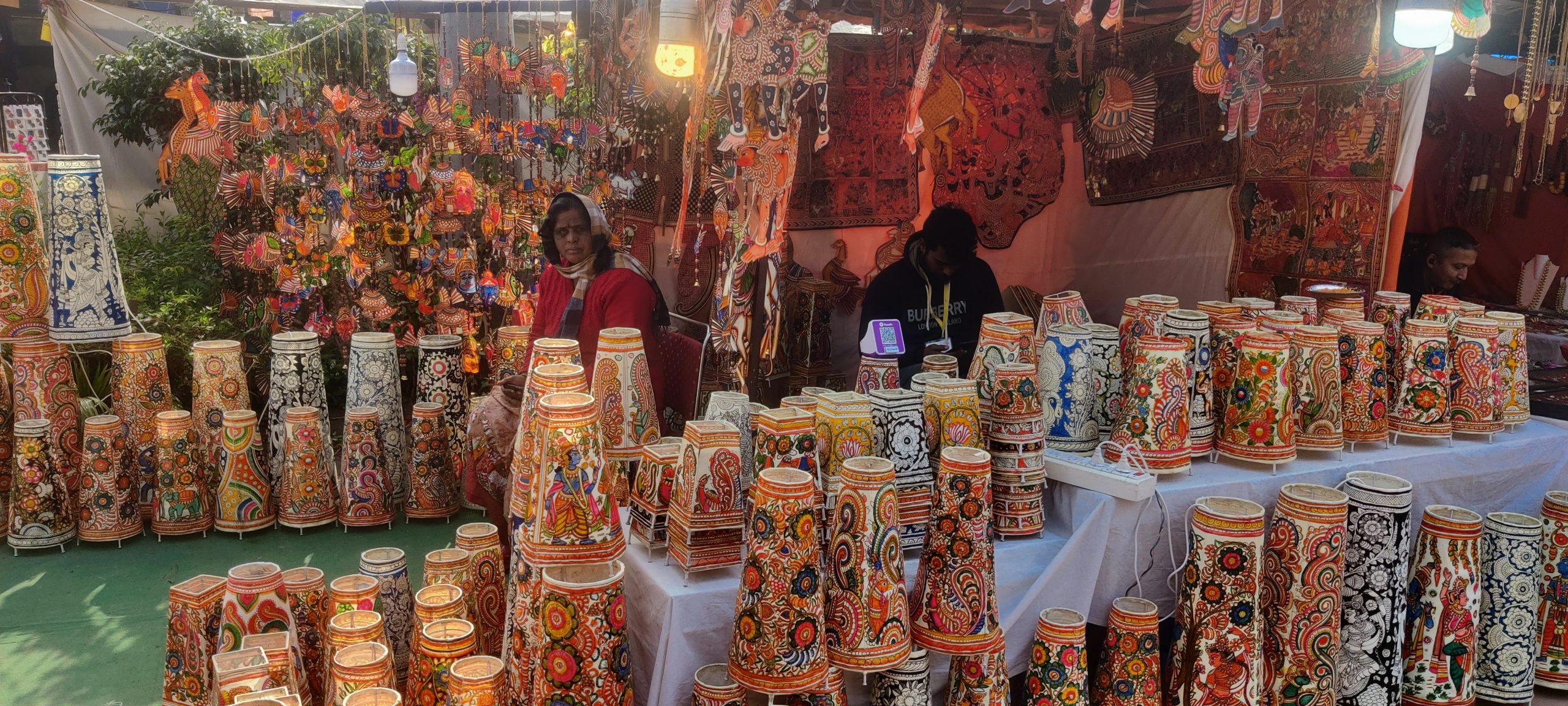 Additionally, it features leather work, recycled products, fine ‘soof’ embroidery from Kutch, natural grass baskets from Orissa, ‘sholapith’ flowers from West Bengal, dry flower art from Jharkhand, and ‘phad’ painting from Rajasthan.
Additionally, it features leather work, recycled products, fine ‘soof’ embroidery from Kutch, natural grass baskets from Orissa, ‘sholapith’ flowers from West Bengal, dry flower art from Jharkhand, and ‘phad’ painting from Rajasthan.
“We aim to create a platform that unites artisans from diverse corners of our country, allowing them to collectively represent the rich tapestry of India’s traditional crafts. Our objective is to provide space for underprivileged artisans, who often lack opportunities within their own communities, to exhibit their exquisite artistry. Furthermore, we have arranged workshops catering to children seeking to explore various craft forms,” said Charu Verma, senior project head of Dastkari Haat Samiti.
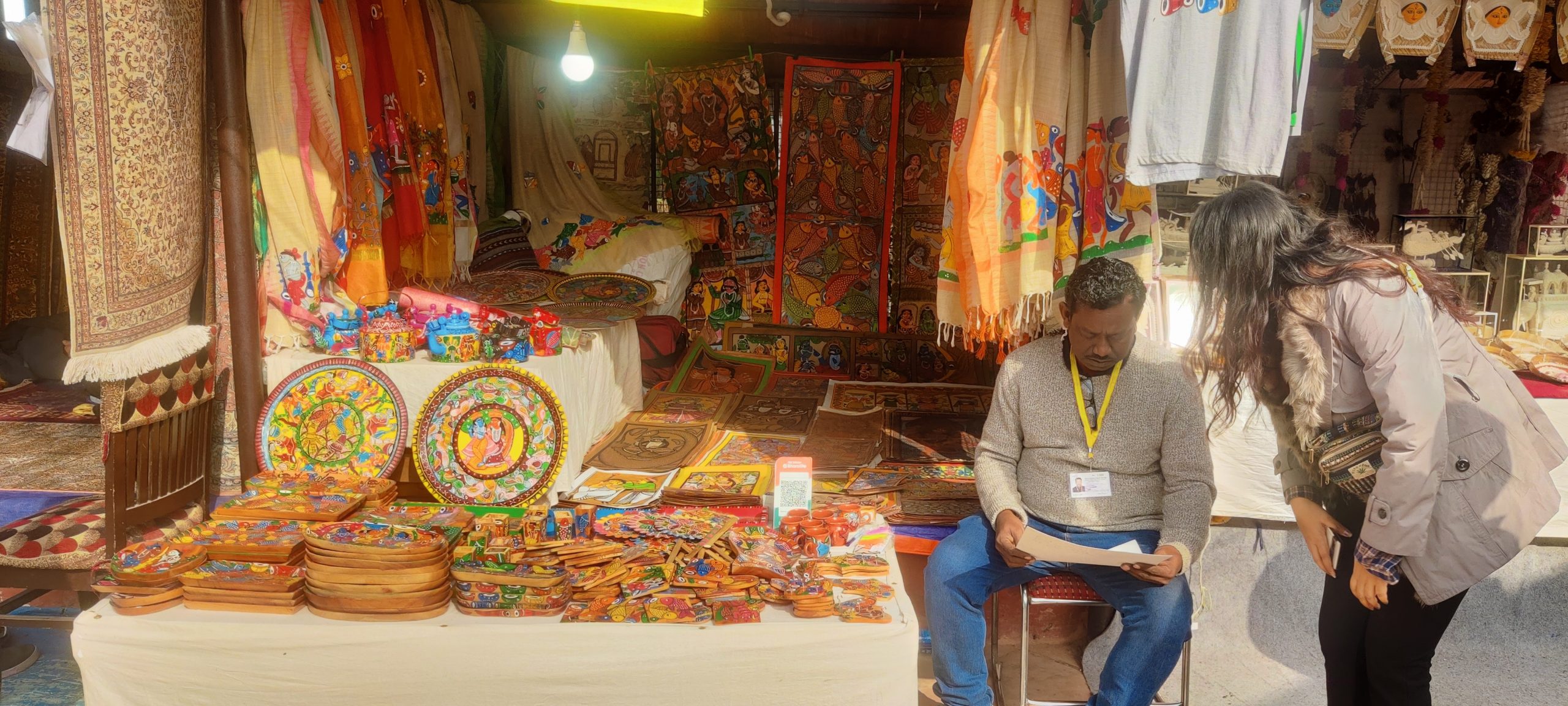 Bahadur Chitrikar, an adept ‘pattachitra’ painting artist from West Bengal, expressed his deep-rooted connection to the exhibition, citing, “I am associated with ‘pattachitra’ painting from childhood. Every year for the past two decades, I’ve made it a point to be a part of this exhibition, and it has been an incredibly rewarding journey.”
Bahadur Chitrikar, an adept ‘pattachitra’ painting artist from West Bengal, expressed his deep-rooted connection to the exhibition, citing, “I am associated with ‘pattachitra’ painting from childhood. Every year for the past two decades, I’ve made it a point to be a part of this exhibition, and it has been an incredibly rewarding journey.”
Chitrikar lauded the exhibition for providing a platform that not only showcases their art but also facilitates sales.
“As artists, our expertise lies in creating art, but these platforms offer us the invaluable opportunity to reach potential buyers. I am truly grateful for this initiative,” he added.
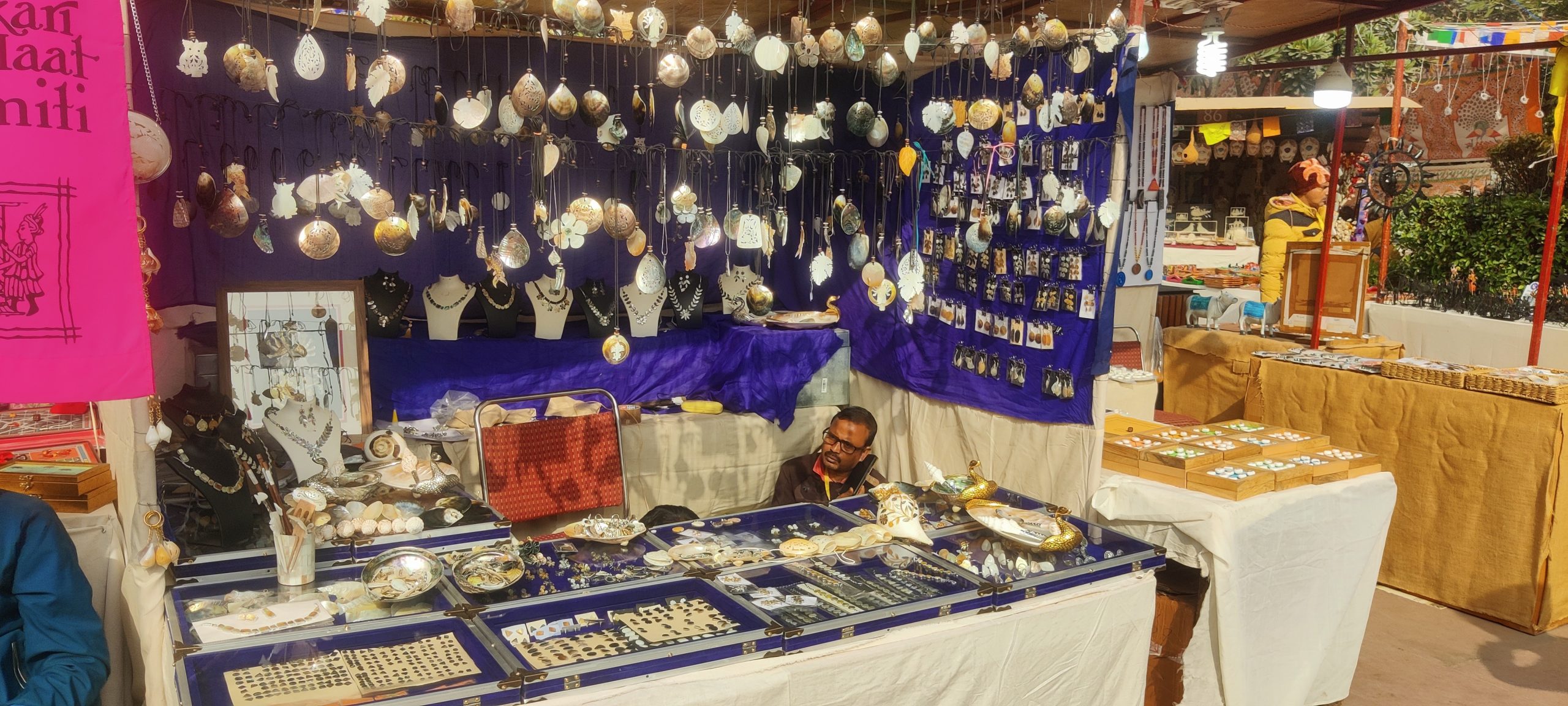 Reflecting on the impact of the exhibition on his artistic growth, Chitrikar shared, “I have learned a lot from this yearly exhibition, and it has really helped me grow as an artist. Because of what I’ve learned, I have been able to create a mini museum at my home that shows how much I’ve been influenced by this special event.”
Reflecting on the impact of the exhibition on his artistic growth, Chitrikar shared, “I have learned a lot from this yearly exhibition, and it has really helped me grow as an artist. Because of what I’ve learned, I have been able to create a mini museum at my home that shows how much I’ve been influenced by this special event.”
Emphasising the broader impact, he mentioned, “The exhibition has made good sales, drawing artists from different places to sell their art. This not only helps us make money but also lets us meet other artists to share ideas and inspire each other. Basically, the exhibition has been really important in helping art and artists move forward. It provides chance to make money and also gives us a place to come up with creative ideas.”
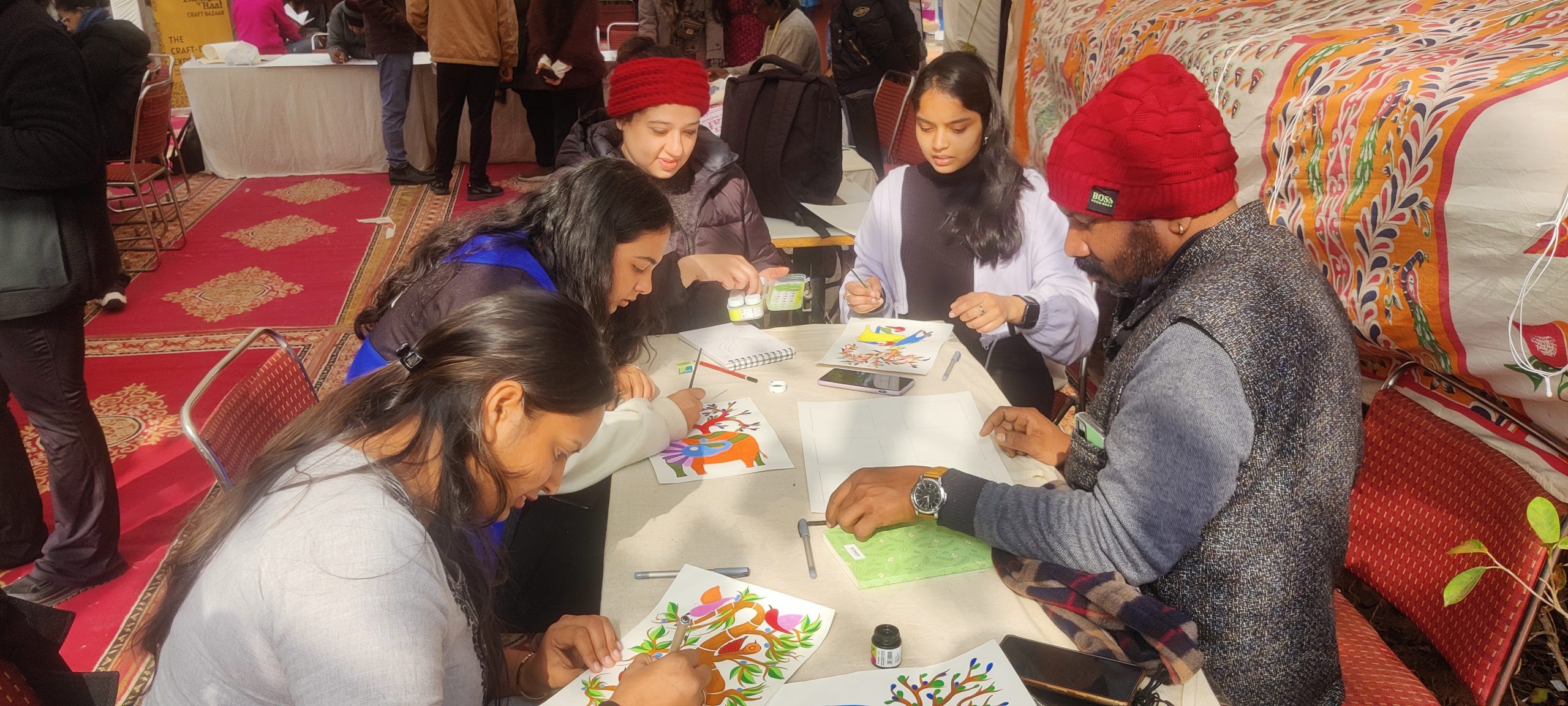 On the other hand, Gansham, a craftsman from Uttar Pradesh, shared the challenges faced due to the COVID-19 pandemic.
On the other hand, Gansham, a craftsman from Uttar Pradesh, shared the challenges faced due to the COVID-19 pandemic.
“Our family has been in this business for three generations, and I’ve personally been setting up my stall here since 2008,” he remarked. Discussing the impact of the pandemic, Gansham highlighted a noticeable decline in sales.
“The COVID-19 pandemic has had a significant impact on our business. With more people choosing to shop at established stores, our sales have taken a hit,” he lamented. Despite the hurdles, Gansham remained hopeful, aiming for sales figures of Rs 1 to 2 lakh despite ongoing challenges.
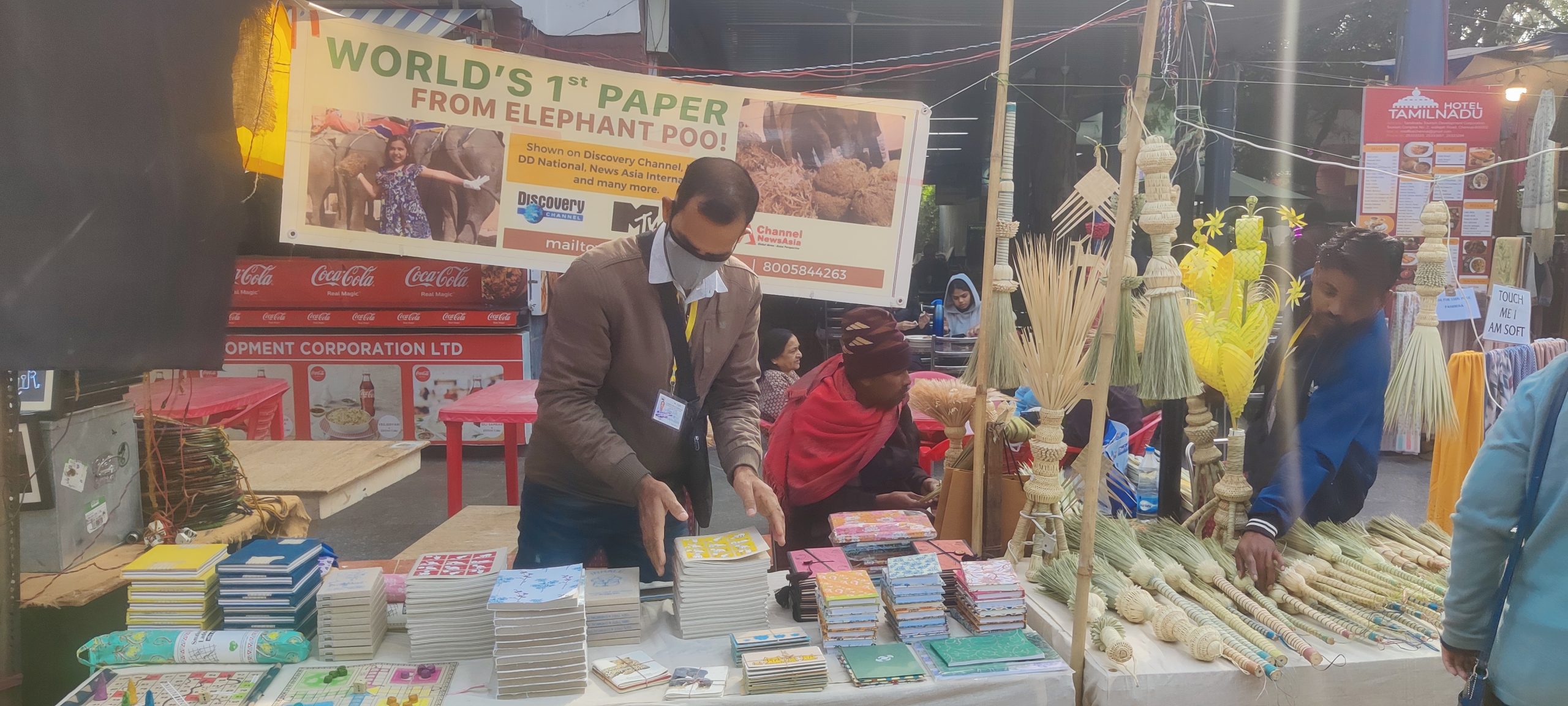 Lakshay Kapoor from Delhi, associated with the Monami Foundation specialising in ‘zardouzi’, basket weaving, and crochet, highlighted their presence and expansion.
Lakshay Kapoor from Delhi, associated with the Monami Foundation specialising in ‘zardouzi’, basket weaving, and crochet, highlighted their presence and expansion.
“We are proud to be associated with 1,200 individuals from various regions, including Uttarakhand, Uttar Pradesh, Delhi NCR, and West Bengal,” Kapoor mentioned.
Kapoor said that the significance of exhibitions like these is in providing a vital platform for artists to showcase their creations and gather meaningful feedback from the public.
“Our products have garnered praise for their use of high-quality raw materials and thoughtful designs,” added Kapoor.
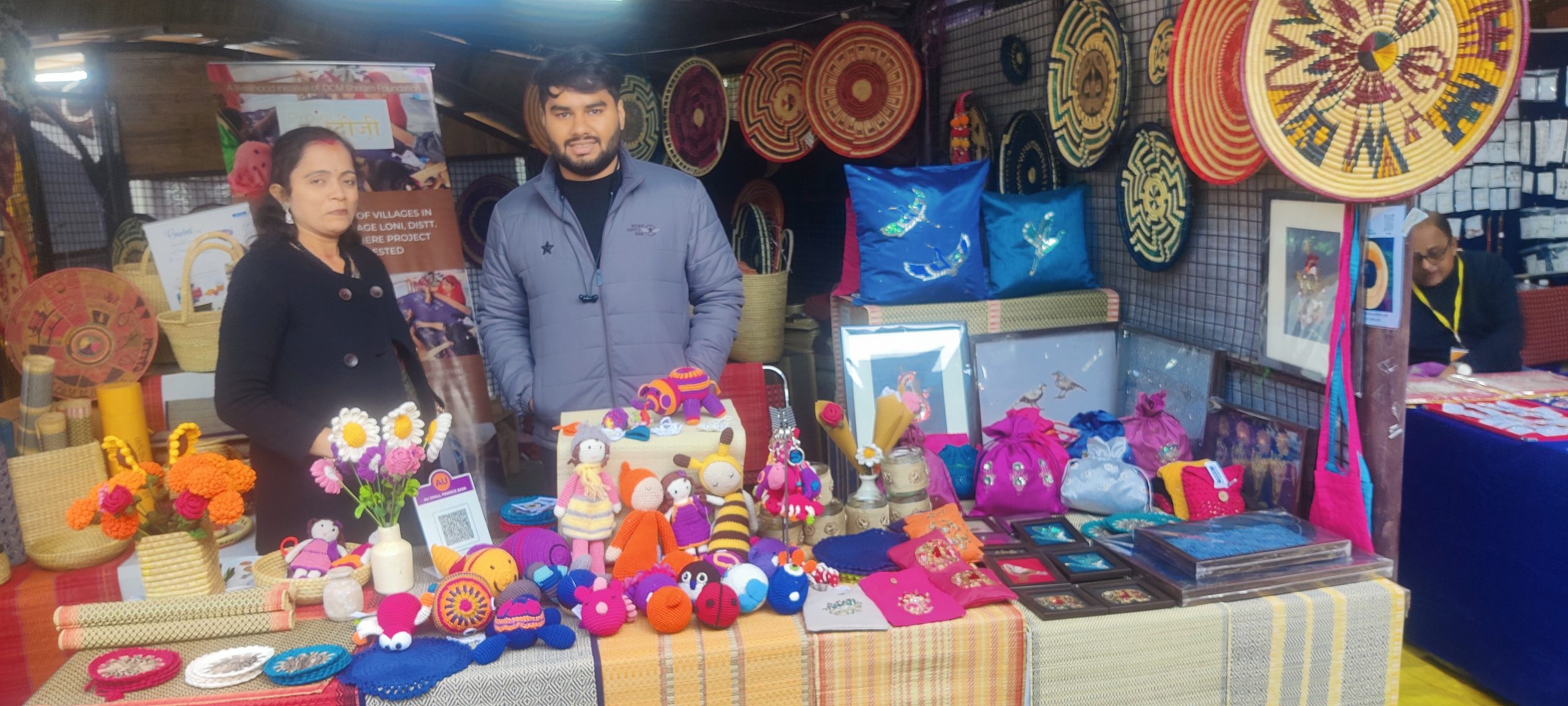 Offering a plethora of culinary-based handicrafts like wicker baskets and cooking utensils crafted from ceramic and metals, exhibitor Ram Kumar from Delhi said, “We’ve brought a range of utensils made in terracotta and ceramic to the bazaar. From basic clay cups to premium copper oxide glazed ceramics, our display is diverse. We’re hopeful that people will come and purchase from us in abundance.”
Offering a plethora of culinary-based handicrafts like wicker baskets and cooking utensils crafted from ceramic and metals, exhibitor Ram Kumar from Delhi said, “We’ve brought a range of utensils made in terracotta and ceramic to the bazaar. From basic clay cups to premium copper oxide glazed ceramics, our display is diverse. We’re hopeful that people will come and purchase from us in abundance.”
While the event garners recognition as a success by many, some individuals have observed relatively sluggish sales compared to previous years.
Richa Kaur, a visitor, expressed her observations, noting that the footfall of buyers pales in comparison to the number of visitors.
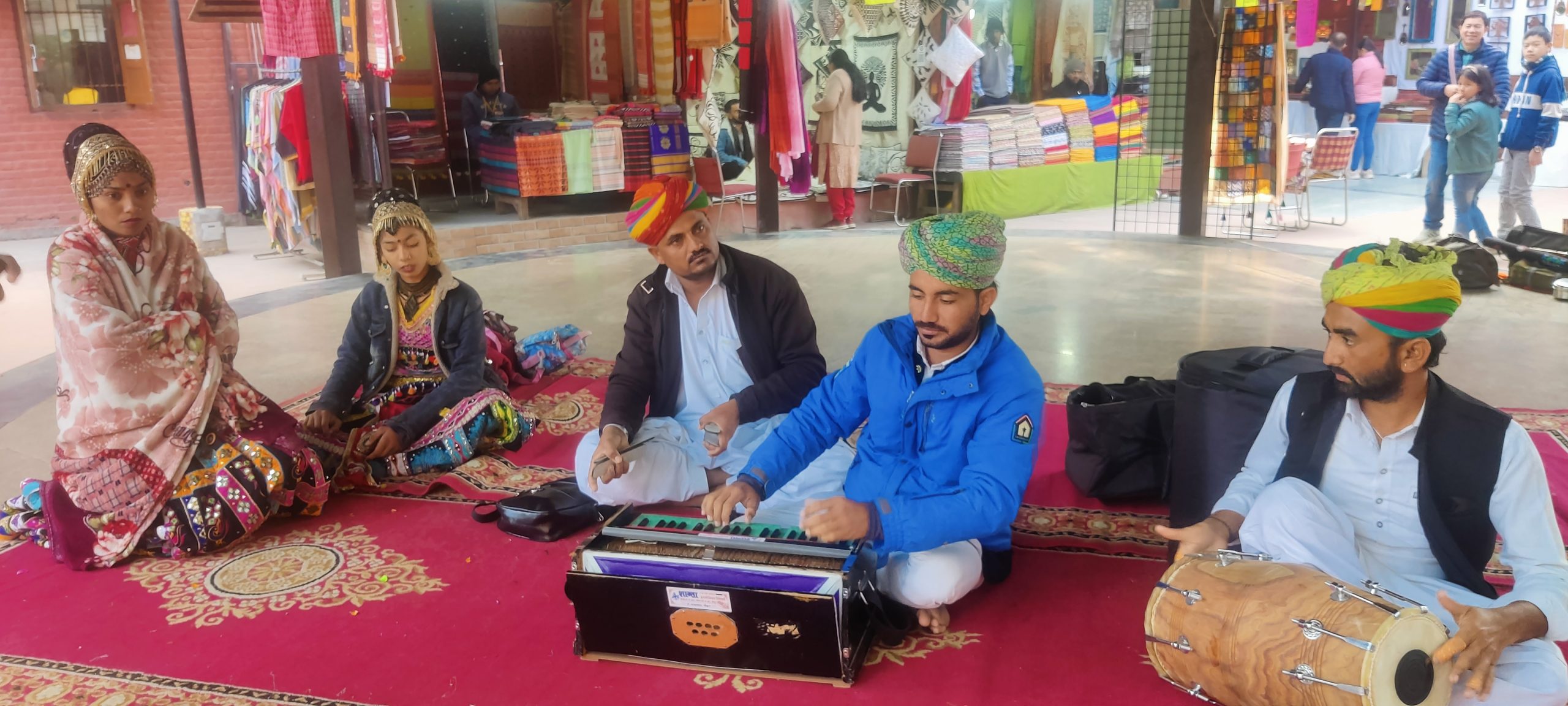 She highlighted a prevalent trend where individuals appreciate the crafts on display, yet the purchasing activity appears limited.
She highlighted a prevalent trend where individuals appreciate the crafts on display, yet the purchasing activity appears limited.
“The shift towards e-commerce culture might have contributed to this phenomenon, where people are inclined to spend significantly more on items for added convenience and comfort, despite the accessible and reasonably priced nature of the crafts available at the events like this,” Kaur said.
Jaya Jaitly, President of Dastkari Haat Samiti, told Patriot, “I have been organising these exhibitions for many years now. I have been holding exhibitions at Delhi Haat for 30 years. Additionally, I run these bazaars across India in different locations. I have noticed that when artisans receive good money and recognition, they do not leave their craft.
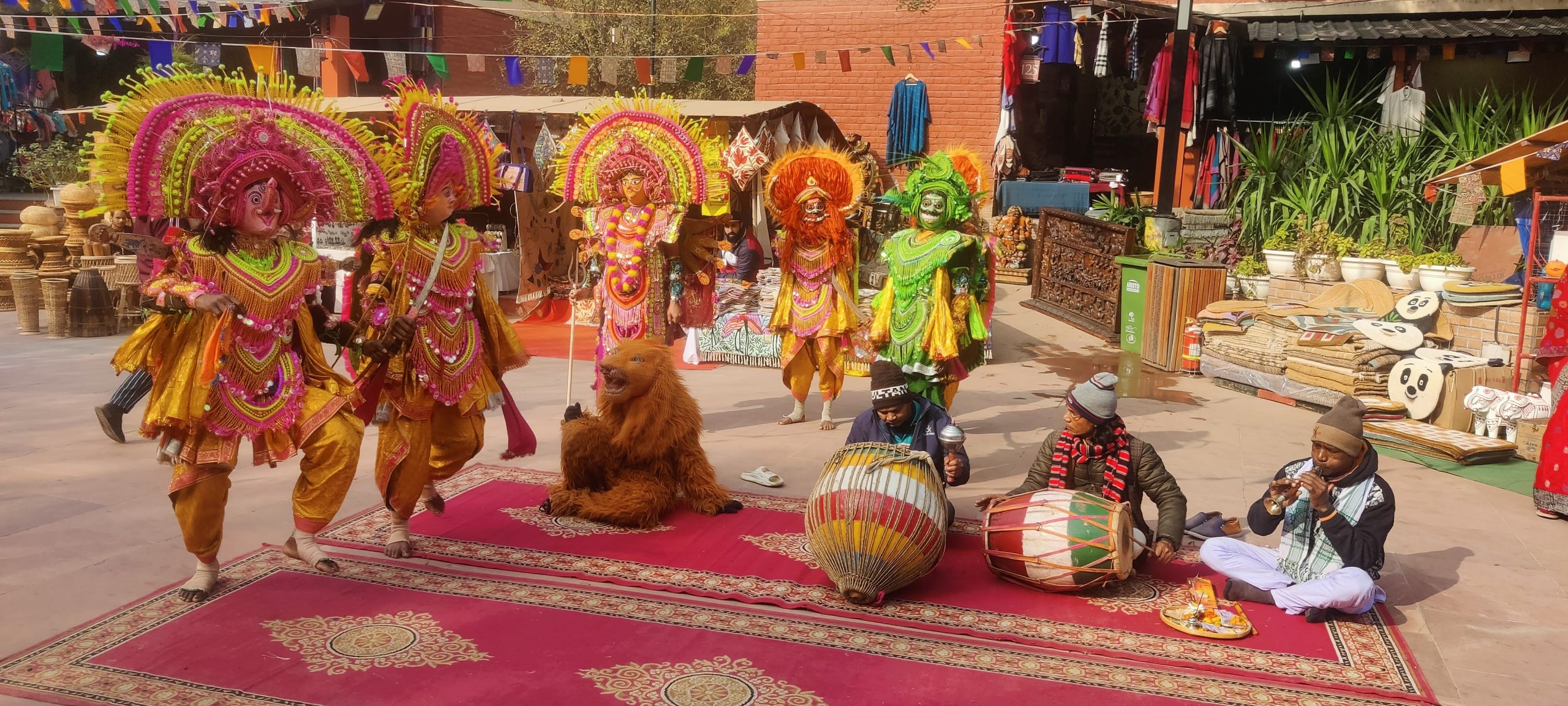 “We are working with young artisans; there are very few old artisans remaining. We are witnessing even women artisans pursuing it. Everyone appreciates crafted materials because in malls, you find the same things, but here, every artisan brings something different,” Jaitly added.
“We are working with young artisans; there are very few old artisans remaining. We are witnessing even women artisans pursuing it. Everyone appreciates crafted materials because in malls, you find the same things, but here, every artisan brings something different,” Jaitly added.
“They offer a lot of variety. They handcraft items that are very unique, imparting their identity and indigenous knowledge into these products. This also educates people about different cultures. There are many government crafts bazaars, but they feature the same artisans. We provide space to different artisans,” she said.
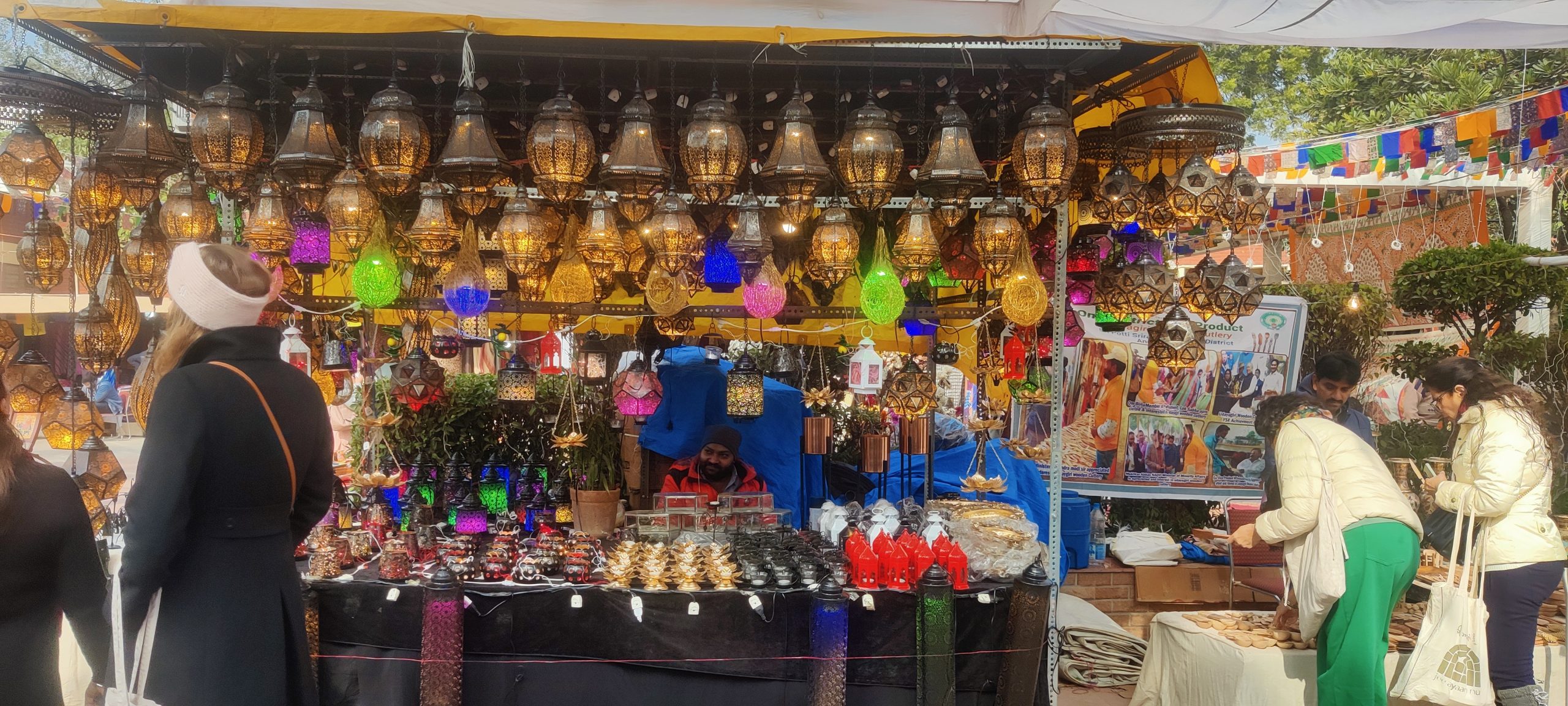 “The purpose behind this is to preserve our culture and heritage. We aim to create employment opportunities while ensuring the survival of our culture. This way, these artisans work on something that gives them an identity, rather than just working in a factory or a mobile shop. That won’t provide them with any identity,” she added.
“The purpose behind this is to preserve our culture and heritage. We aim to create employment opportunities while ensuring the survival of our culture. This way, these artisans work on something that gives them an identity, rather than just working in a factory or a mobile shop. That won’t provide them with any identity,” she added.

